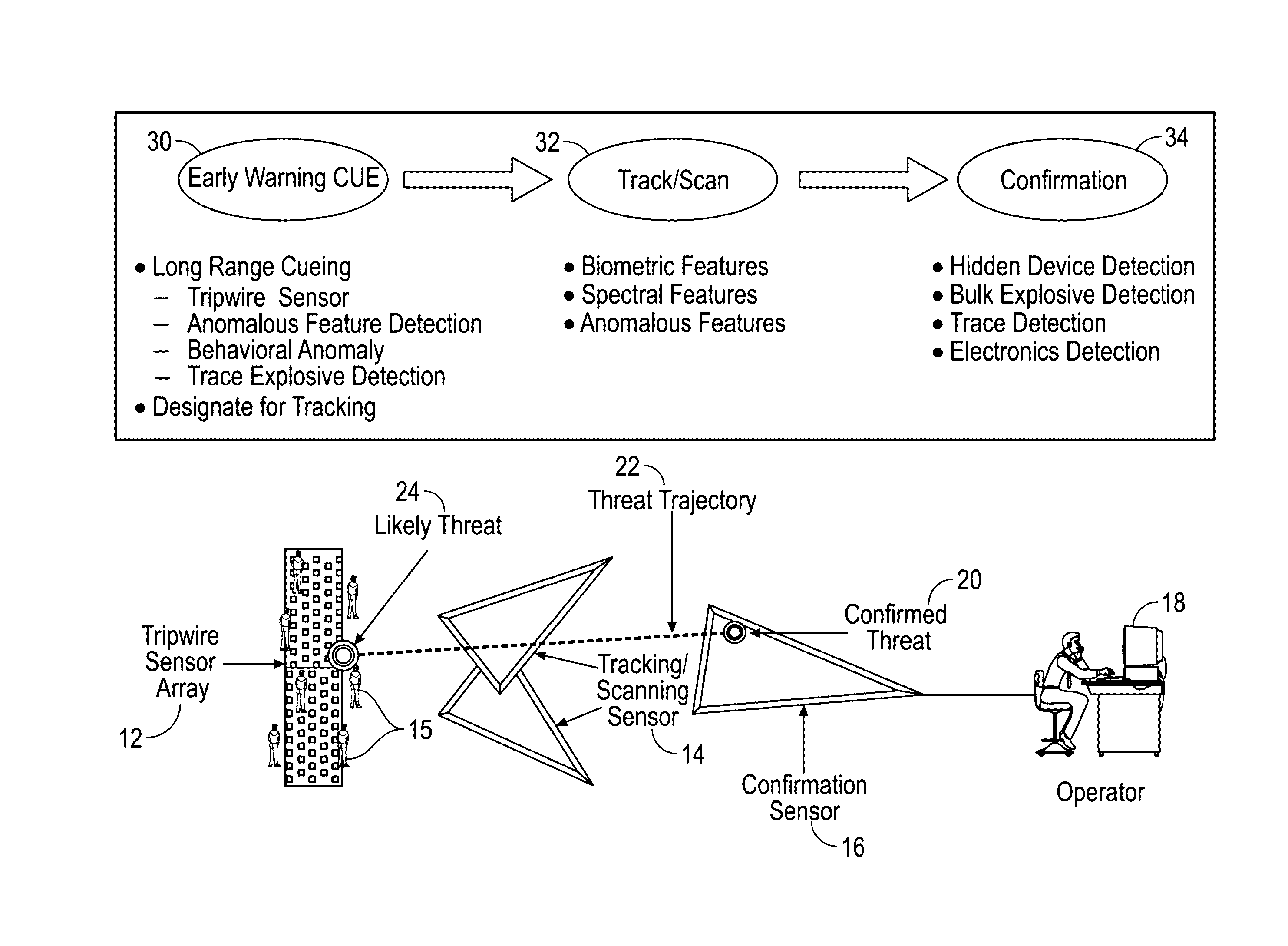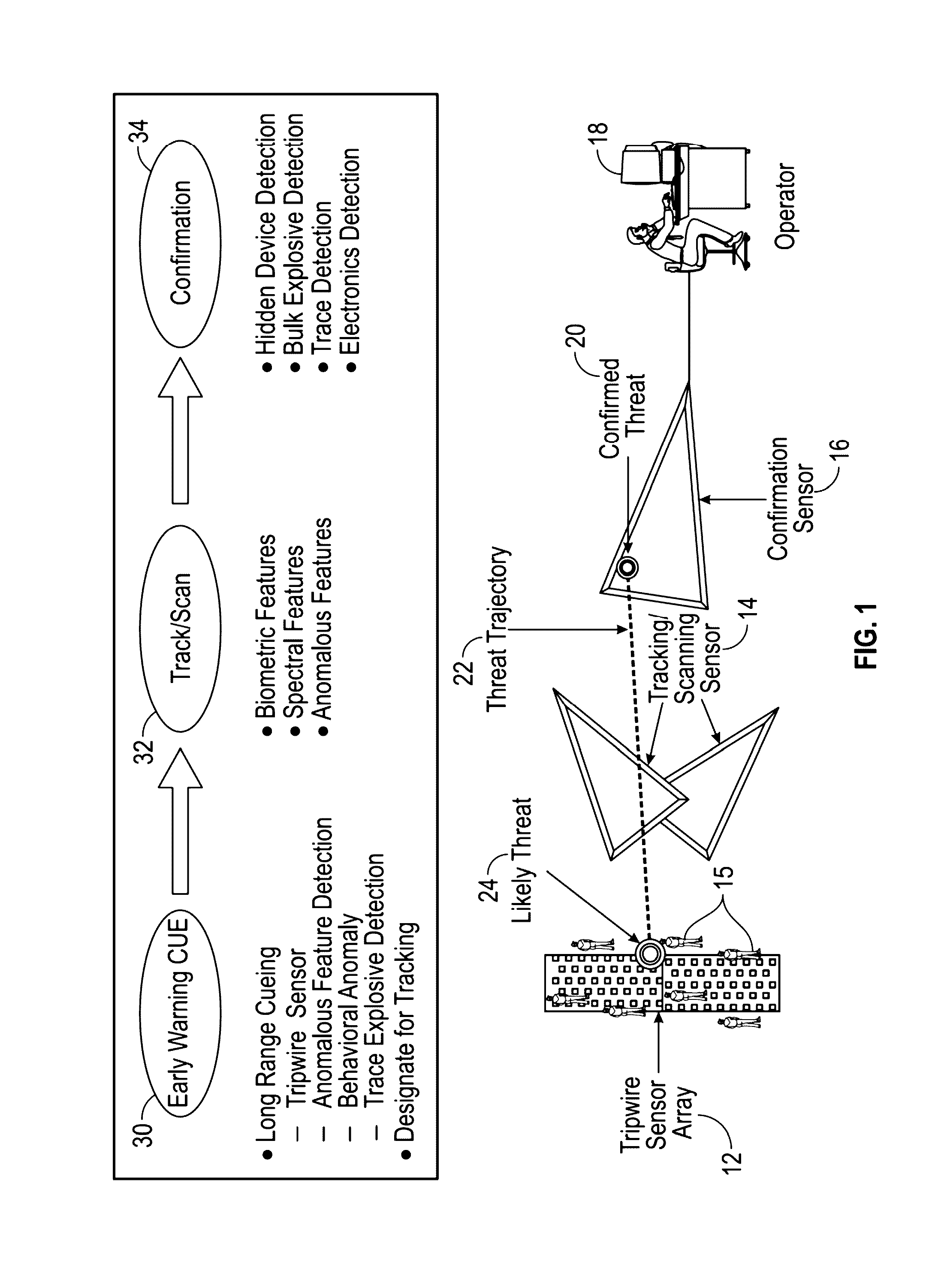Method for calculating sensor performance of a sensor grid using dynamic path aggregation
a sensor grid and dynamic path technology, applied in probabilistic networks, instruments, computing, etc., can solve the problems of unrealistically inflating the overall probability of detection, inherently flawed analysis, and no one system will detect every possible weapon
- Summary
- Abstract
- Description
- Claims
- Application Information
AI Technical Summary
Benefits of technology
Problems solved by technology
Method used
Image
Examples
Embodiment Construction
[0073]Detailed descriptions of the preferred embodiment are provided herein. It is to be understood, however, that the present invention may be embodied in various forms. Therefore, specific details disclosed herein are not to be interpreted as limiting, but rather as a basis for the claims and as a representative basis for teaching one skilled in the art to employ the present invention in virtually any appropriately detailed system, structure or manner.
[0074]In general, this invention evaluates a type of nonlinear cost function over all possible event spaces when the number of event spaces is too large to explicitly enumerate. In the invention description, the inventors use maximum probability of detection as the cost function and pedestrian path as the event space. There remain a number of other possible nonlinear cost function examples in which this description is pertinent. For example, instead of maximum probability of detection, one may be interested in minimum detection proba...
PUM
 Login to View More
Login to View More Abstract
Description
Claims
Application Information
 Login to View More
Login to View More - R&D
- Intellectual Property
- Life Sciences
- Materials
- Tech Scout
- Unparalleled Data Quality
- Higher Quality Content
- 60% Fewer Hallucinations
Browse by: Latest US Patents, China's latest patents, Technical Efficacy Thesaurus, Application Domain, Technology Topic, Popular Technical Reports.
© 2025 PatSnap. All rights reserved.Legal|Privacy policy|Modern Slavery Act Transparency Statement|Sitemap|About US| Contact US: help@patsnap.com



